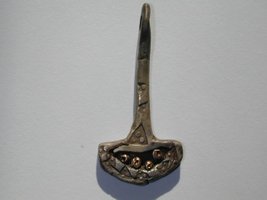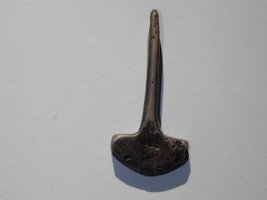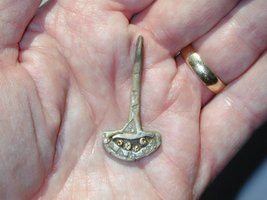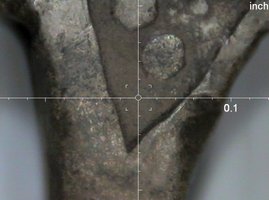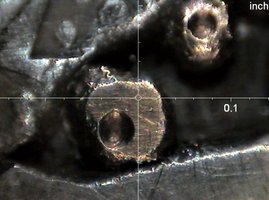Viking Thor's hammers - a craft in Viking Age and booming business in modern age..
Who isn't interested in a Thor's hammer - when it comes to Viking Age addiction ? The season of Vikings 4 had started, and being season 4, proof of our ongoing 'hunger' for the attractive world of the Viking Age when people were fighting but were free in a way nowadays we seem quite jealous of and attracted by in a strange form of way..
If one scrolls his way through Ebay, one tends to believe that Viking Age Thor's hammers are all over the place. The last 5 or 10 years one witnesses a booming of Genuine Thor's Hammers. Or.. what the seller is liking to believe or the salesman the seller the other way around. The worrying part being all those people who are bidding on what is more than obvious to be a forgery, executed in often a very 'childish' way compared with the known genuine Thor's hammers.
Even some auction houses (like Timeline Auctions) have sold Thor's hammers, apart for not having a good provenance even not accompanied with an XRF analysis. Having said that, it surprises me also that if an XRF analysis had been executed and it is mentioned at the auction catalogue, one never sees the results of this mentioned. So, how can one allow to judge the result and value of the XRF analysis being made ? Food for thought..
Over the years I have seen more than a hundred Thor's hammers passing by. I have always a direct "feel" is one could be genuine or not just by the characteristics of its decoration and the way it had been executed involved or the surface of the silver involved. But 'thinking from the outside' is not enough if one really researchs if a genuine Thor's hammer is what it says to be..
Jane Kershaw, a writer on the Viking Age and in specific researching Scandinavian jewellry found in England and investigating the silver used, had written an more than interesting blog on a Thor's hammer wich was aquired by the British Museum and turned out to be a modern age forgery. It can be read here. You can find the blog under Thursday 9 April 2015, a modern fake exposed.
Now, we must turn to a Thor's hammer I like to address here. First of all, the person who showed this hammer to me, I know as a reliable man who is sometimes jumping into conclusions when it comes to identifying another Odin in again another Viking Age artefact - but as a collector we all like to have a true pagan god in our hands, I do not blame him..
I protect him nevertheless by not mentioning his name, as bad news is always travelling faster than good, and his more than artificially knowledge of Viking Age artefacts and the metals involved doesn't need to being ridiculised in some unsuspected manner the one way or the other in this blog. My true aim of this blog is truly addressing where someone considering aquiring a Thor's hammer from the Viking Age should be cautious at.
When shown to me, I was thrilled at first by this Thor's hammer. Finally an interesting looking Thor's hammer. 'A bit strange in a good way' to sum my first feelings up frankly. Unique form of execution. Clumsy ánd a piece of art. A very interesting clash in a form.. The form of the hammer being clumsy, the execution of the stamped dots and triangles far from shouting 'forgery !' at first glance. And then, of course.. the panel with golden balls. Exact foundspot not known.. that did not help..
Off the road as can be, and withstanding the feeling that just another ordinary guy had tried to make a quick modern age hammer for the market. A form wich cannot be compared with whatsoever other known Thor's hammer of the Viking Age.
But.. if it is that rare, is it genuine then ?
'The man who like to sell the Thor's hammer hadn't gone 'over one night ice'. An XRF analysis was executed, at the for Advanced Life Cycle Engineering at the University of Maryland, both on the silver and the golden balls. The results being just what it says to be, as one just likes to know the proportions of materials used. But the golden question is of course: what should be in it, regardless what and why is that so ?
Sterling silver, which is what most modern silver is, is 92.5% silver, and 7.5% copper. That is an international standard.
Analysis at the British Museum revealed that the pendant was made of 93% silver, with the rest being copper.
Analysis of the hammer I address here resulted in the following proportions of metals involved:
Result of analysis - on the silver
47 Ag (silver) 90.72 %
29 Cu (copper) 9.28%
Result of analysis - on the gold ball(s)
28 Cu (copper) 39.33%
79 Au (gold) 34.11%
47 Ag (silver) 25.15%
30 Zn (?) 1.40%
The result on the silver shows that the contains are pretty much the same as the ones on th example of the British Museum. The golden balls are from partly silver and cold, surprisingly being the better part being copper. Now, I do not know if that segment is unusual in the Viking Age and I should consult Jane Kershaw about this.
I also showed the hammer to dr. Kevin Leahy, National Adviser, Early Medieval Metalwork for The Portable Antiquities Scheme. Two of his reactions were:
After taking just a look at the images, unaware of the results of the XRF analysis:
'I've not seen anything like this before except in a general sense. It looks like they have used a stamp on it of the sort that we see on Gotlandish silver work. I've not seen the recessed panel with what looks like gold granulation before, although the use of granulation is OK. An interesting piece.'
Asking to specify his opinion for me a bit, he replied:
It is difficult to be certain just looking at images (and when handling the object) but I feel that this thing looks OK. My reasoning is that:
To make this someone would have had to have made two stamps (they look like real stamp impressions and not cast). This would involve as much work as went into making the hammer.
Forgers are not noted for their originally it not being in their interests to produces something like this that lacks a parallel.
All of the elements used to decorate this object fit into the Viking tool box.
While I am unwilling to stick my neck out and say that this is genuine I would not to reject it.
After taking a look at the images of the spots having being examined for the XRF analysis:
'Well so far so good. I am not an expert on the alloys used on Viking period metalwork and all I can say is that these don't appear to be modern alloys: the gold is not 9ct and the silver is not sterling. Looking at the microscope images I still think that this object looks OK'
Ru Smith added in a comment:
'I would say that forgers rather often look to make something close enough to be convincing and yet different enough for it not to be picked out as a direct copy. The silver analysis argues against antiquity, I think. The find record and treasure number would be key in this case.' wich sounded plausible to me, too..
But - and there we go again - a find spot other than 'East England' is unknown, let alone a find record and treasure number.
Asking the salesman about specifically why he thought the hammer to be genuine, he replied, and this was before he got to know about the article of Jane Kershaw:
'First of all, keep in mind that fakers are going to use scrap metal (with likely modern components) for the fakes. They are not going to refine metals and create plausible alloy compositions—they are not that sophisticated. Now, if a faker was going make a really expensive fake, he would take an ancient silver item and melt it down to create his bogus masterpiece. ...
Silver and copper are a reasonable composition for ancient silver. Notice there are no unusual a/k/a modern metals involved.
The balls? Copper and zinc are common constituents of bronze. So the results suggest that the balls were made of bronze, coated with a thick coating of gold (with some silver in it), and it is possible some of the silver content is a bleed through from the metal underneath.
What you are always looking for are a) elements which are appropriate, b) a ratio of elements which is appropriate, and c) an absence of elements which do not belong. And the two tests pass in good order.'
Now, rounding up.. is this Thor's hammer indeed a modern age forgery ? One tends to say yes just looking at the results of the XRF analysis executed.
But.. what about this article on gold parting ? https://en.wikipedia.org/wiki/Gold_parting
Under 'Ancient and medieval world' we read:
The only large group of medieval parting vessels so far discovered were found at Coppergate and Picadilly sites in York
So.. was after all, the process of parting the gold out of silver an Viking Age practice after all ? I have adressed this question to Jane Kersh aw. Because, if it was.. how sure we can be of this Thor's hammer not being genuine after all ?
To be continued..
Well. I could have been with these stones until after dark, but as my wife wanted to travel on.. well.. I see you again, some day, hogback stones from Gosforth. And if you happen to be there one day, do not forget that monument on the outside...
Further on with the Cumbrian hogbacktour !
In - yes, luckily again in - St. Peter's church in Heysham, there is a truly beautiful hogback stone. The guide told us, it had been studyied by Thor Ewing, a writer, in 2000. in 'Understanding the Heysham hogback' A tenth century sculpted stone monument and its context (link), Thor Ewing tells in detail what he dicovered on the both sides of this hogback stone.
Just being brought in the church as late as the 1970's accompanied with some protest here and there among the church visitors, considered as being a token of old paganism, it had been remarkably nice preserved, and a lot of detail can be seen, still. Truly worthwile a visit.
I had a small debate with the guide in the church if the - zoomorphic, in my opinion - faces on the sides were lions (or hippo's). The guide doubted if the vikings could have known about lions. Well I guess so, concerning the runes on the Ancient Greek lion statue at the Arsenal, Venice. For example. Vikings did travel south..
But when he told me he was doubting the vikings 'discovered' (as the native inhabitants were of course, in the first place) America before Columbus, I decided to rest my case..
One has to know when to start and to end a conversation ..
Just discovered the book in a bookstore written by Geoff Holder - The guide to the mysterious Lake District, I knew there had to be another hogback stone in Lowther, St. Micheal's Church. With a promising image described in the text of 'a naval and a land-based force of shield-bearing vikings above a fish and what might be a coiled sea serpent. On the reverse is a row of female figures with snakes, possibly a representation of the hideous hag Hel'. Wow. If that did not sound as a true pagan promised land ..
Not complaing too much after all we have seen, this visit was the dissapointing one of them all. But if you wife states 'I am happy to have seen them' and I am answering 'Measuring is knowing' and the even more obligate verb 'handling 'if we did not see it at all, we wouldn't have known anything at all of how they were looking' the glass was again half full, at the last day of our journey..
The hogback stone appeared to be just being tolerated within the entrance segment part of the church. As something you never use anymore but you do not throw away - entirely. That sort of feeling emerged when seeing this hogback asylum seekers.. Bed, bath and bread, ás we say in Dutch, but no luxury at all and standing on some outcuts of wood, you would balance the table with at home..
Come on, St. Micheal's Church.. care a bit more of your 'children' !
This hogback stone was moved in the church in 1907. Hogback stones layed partially buried in the churchyard before it was dug up and moved into the church.
The promising depiction of a longship - as certainly can be seen after some studying - see http://vikingminds.co.uk/pages/longship
we have missed !
The stone itself is (157 x 50 x 30 cm) and very worn.
The hogback stones in Cumbria - very diverse in quality, but everyone worth a visit ! Especially on a gloomy day in late October ...
The churches to visit - see photos of resp. St. Andrew's church in Penrith, St. Mary's church in Gosforth, St. Peter's church in Heysham and St. Micheal's church in Lowther.
Did I miss out on another one in Cumbria ? Let me know !
In a next blog I will take you to four - still remaining utterly mysterious- statues 'guarding' the graveyard of St. Andrew's church in Dacre..
For the last blog of October 9th see this link.
References: (as always, links to where the books can be ordered are attached).
Edwards, B.J.N. Vikings in North West England - The artifacts (1998);
Emery, Gordon, CURIOUS CUMBRIA, The Lake District & Beyond: A celebration of Cumbria (2023)
Ewing, T. 'Understanding the Heysham hogback' A tenth century sculpted stone monument and its context ;
Hall, R. Viking Age archaeology in Britain and Ireland (first printed 1990, reprinted with amendments in 1995);
Holder, G. The guide to the mysterious Lake District (2009)
possibly also (as there within the part of Cumbria dealing with Carlisle, the Eden Valley, Barrow-in-Furness, Whitehaven and the west coast is being dealed with)
Holder, G. Paranormal Cumbria (2010)
http://vikingminds.co.uk/pages/longship
